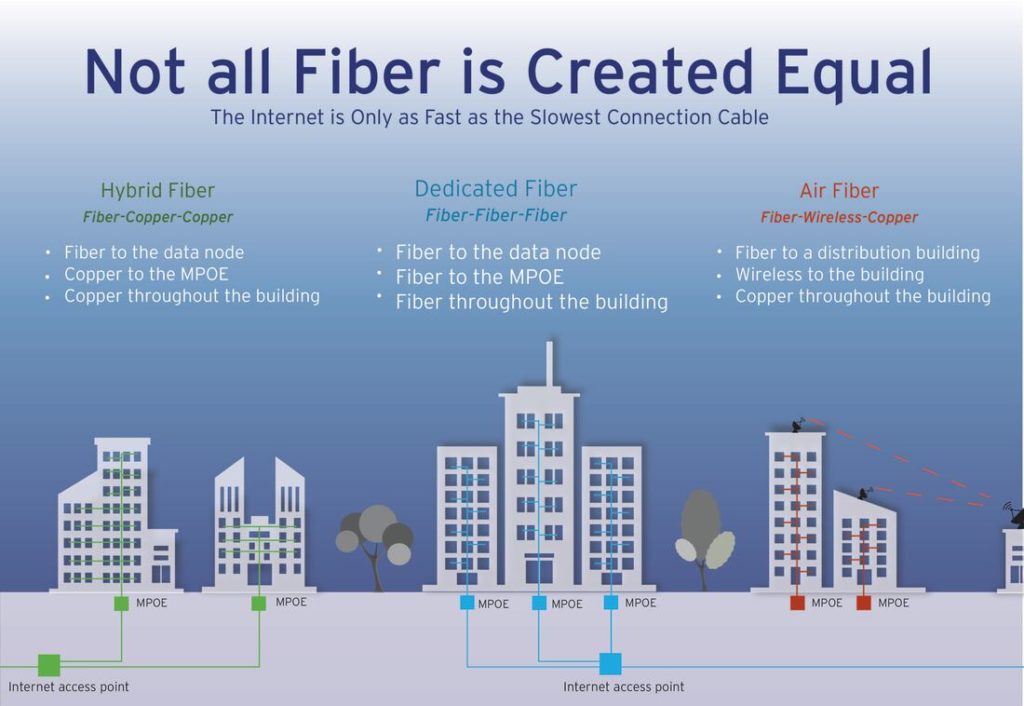- Aug 28, 2019
- Paxio

Finding the right internet solution for your home can be difficult. You’ve heard that fiber internet is the way to go, and that’s absolutely correct. When it comes to internet, fiber is the obvious choice. The decision comes down to knowing what your needs and demands are, and then understanding all the different types of fiber internet solutions that are in the market.
If you’re confused and thought all fiber internet is the same, you’re not alone. Here’s an in-depth look at three different ways the term “fiber” is used by internet service providers. You’ll quickly see that not all “fiber” is actually fiber.
Hybrid Fiber
Hybrid fiber coaxial networks involve providers installing fiber optic connections to a central node located near residential properties . From here, they are converted to coaxial copper connections, allowing existing infrastructure to be used. This last section of infrastructure is commonly referred to as the “last mile” of service. “Last mile” service is the connection between the local internet access point and your home.
Just like a chain, it is only as strong as the weakest link. In this case, internet bandwidth is only as fast as the slowest section of the network. Due to the limitations of coaxial cable capacity, hybrid fiber can only give you the maximum bandwidth supported by the copper connection.
Air Fiber
Air Fiber Networks are transmitted via wave radio from network distribution buildings through the air to destination buildings. These distribution buildings are connected to fiber optic cables located throughout the city. The bandwidth is then delivered through the air to destination buildings and distributed within those buildings using existing coaxial or copper infrastructure. Typically, one building using Air Fiber, services as many as 8-10 residential buildings with a shared fiber network. Air Fiber is almost always a shared connection and generally they can’t guarantee consistent bandwidth.
Additionally, Air Fiber signal connections are adversely affected by:
• Weather- including rain, fog, and wind
• Degradation of signal due to the distance the signal travels between radios
• Signal interference from other RF waves in the same area
• Routine antenna adjustments needed to keep radios in alignment
Dedicated Fiber
As the name implies, dedicated fiber optic internet is defined as a connection where the last mile uses fiber optic cabling. The key difference between dedicated fiber and the previous delivery methods listed above, is that the connection from your house to the internet is fiber from start to finish.
Last mile fiber infrastructure is more costly to install due to every building needing new fiber optic cabling installed within it, but the long-term benefits far outweigh the upfront costs. Some of the benefits of having a dedicated fiber connection to your home include; increased property value, future proof bandwidth, no sharing bandwidth with all your neighbors, access to the full power of the internet in your home.
At PAXIO we believe everyone deserves the best internet connection possible. Which is why we pride ourselves on delivering Dedicated Fiber throughout the Bay Area.
If you stuck with us this long, congratulations! You now know the right questions to ask when someone says they just got fiber internet.
For more information on getting connected to Dedicated Fiber, contact PAXIO today.